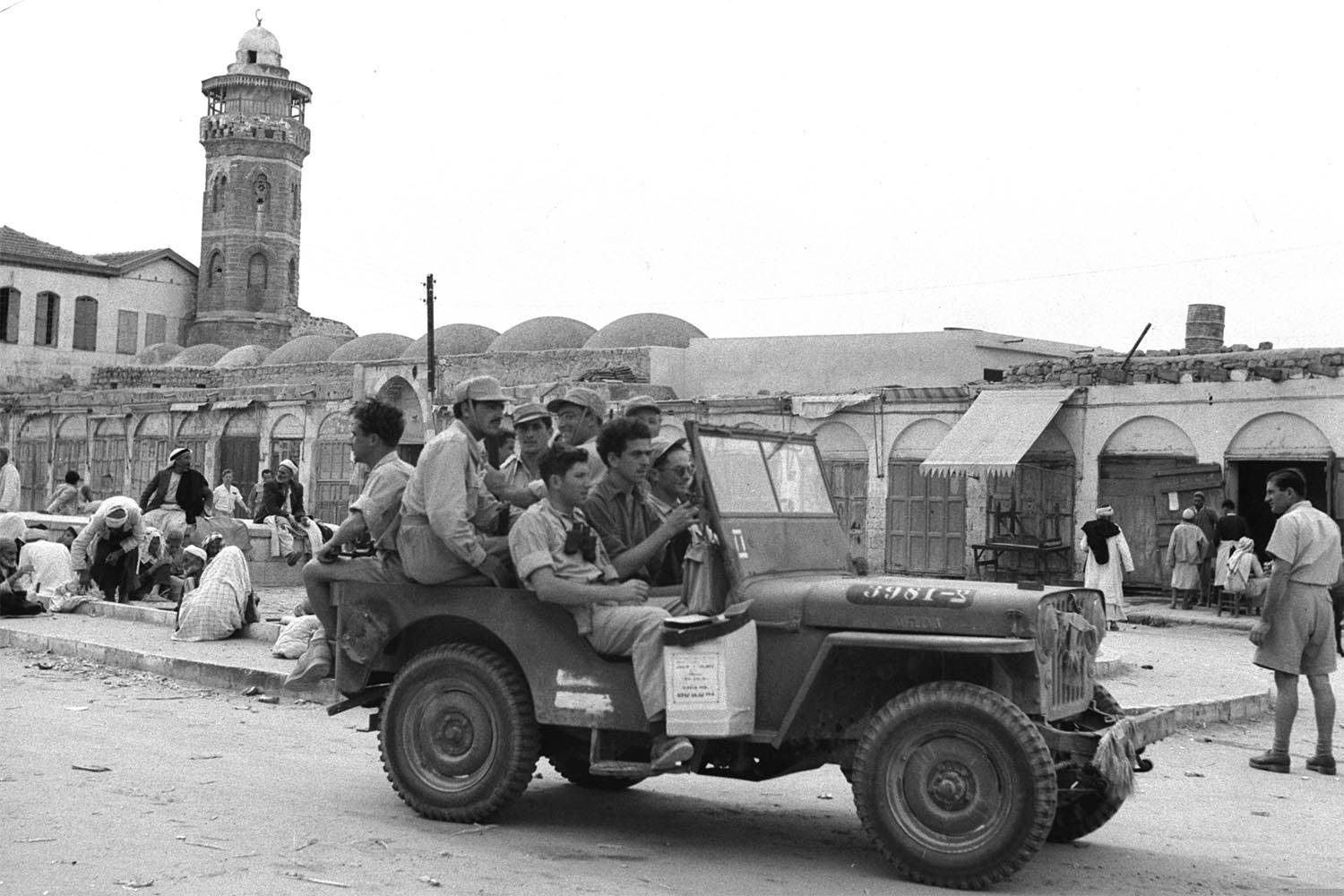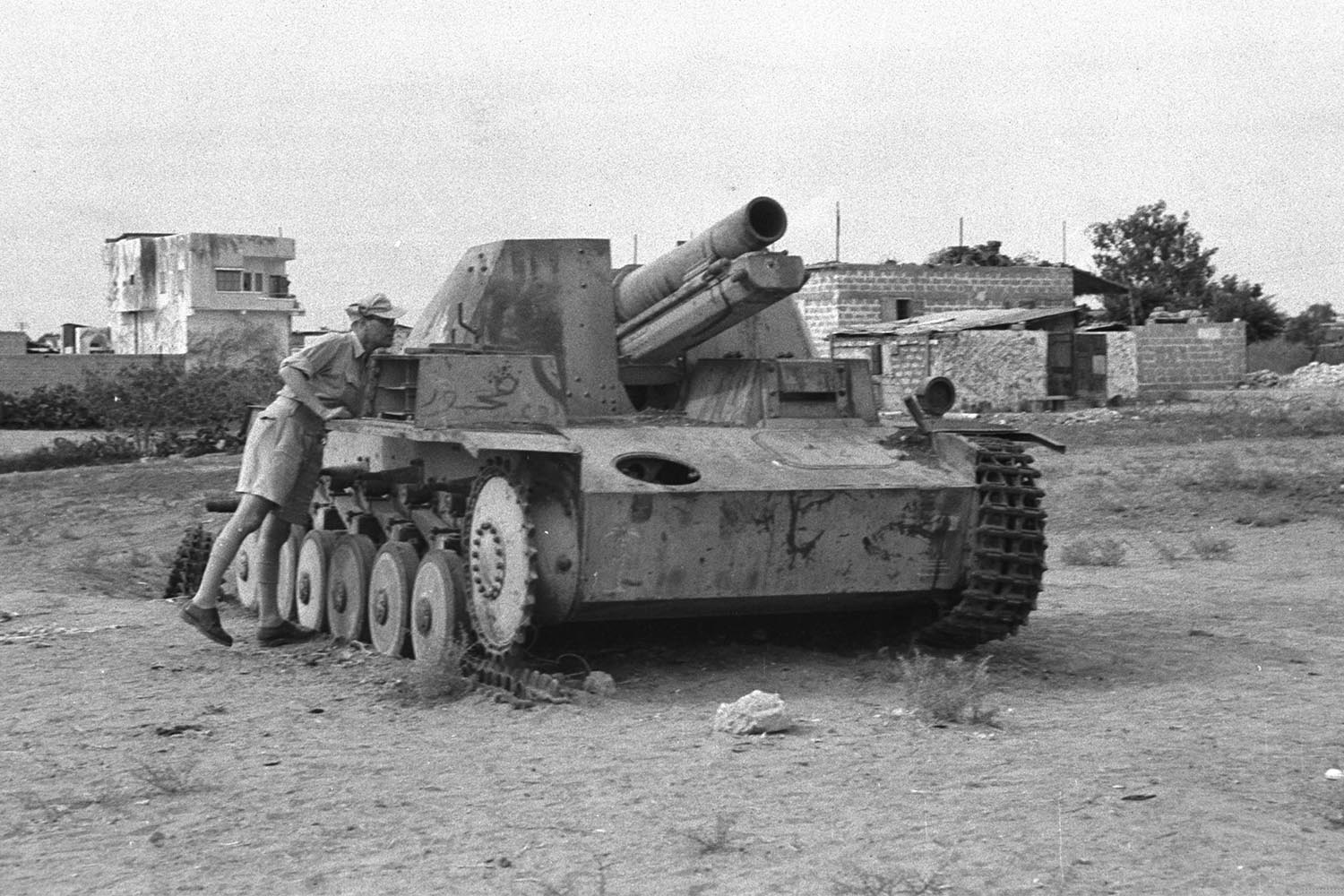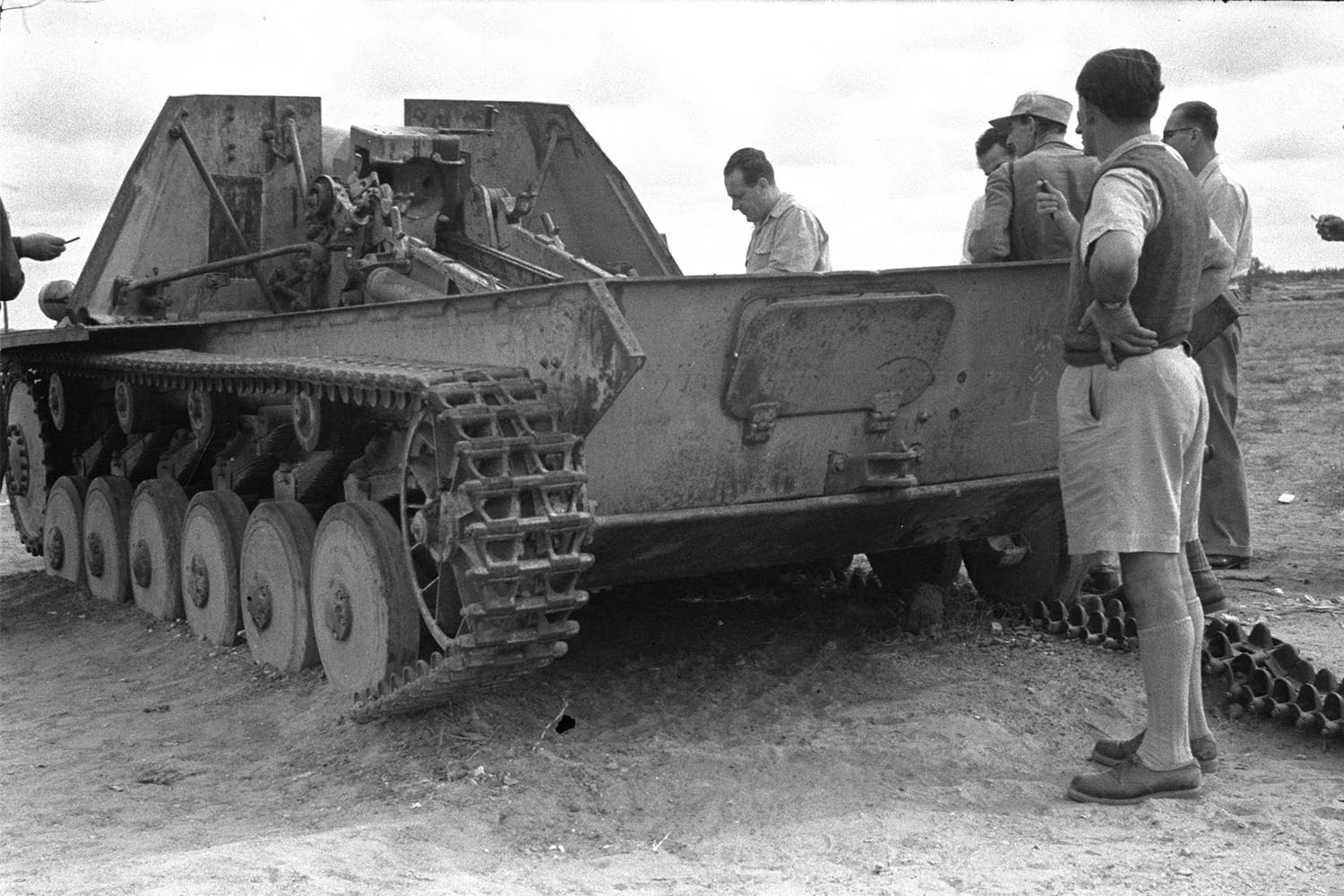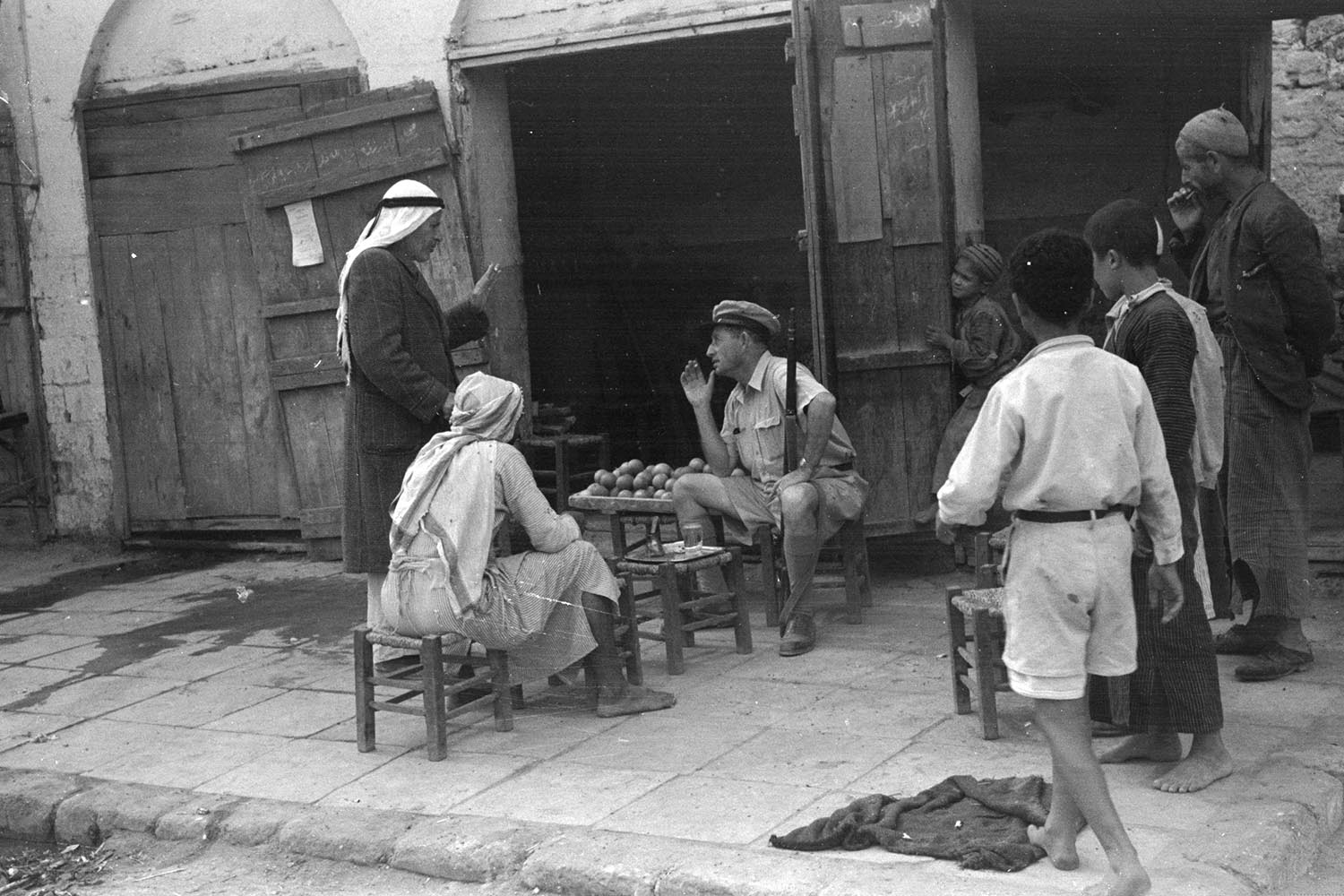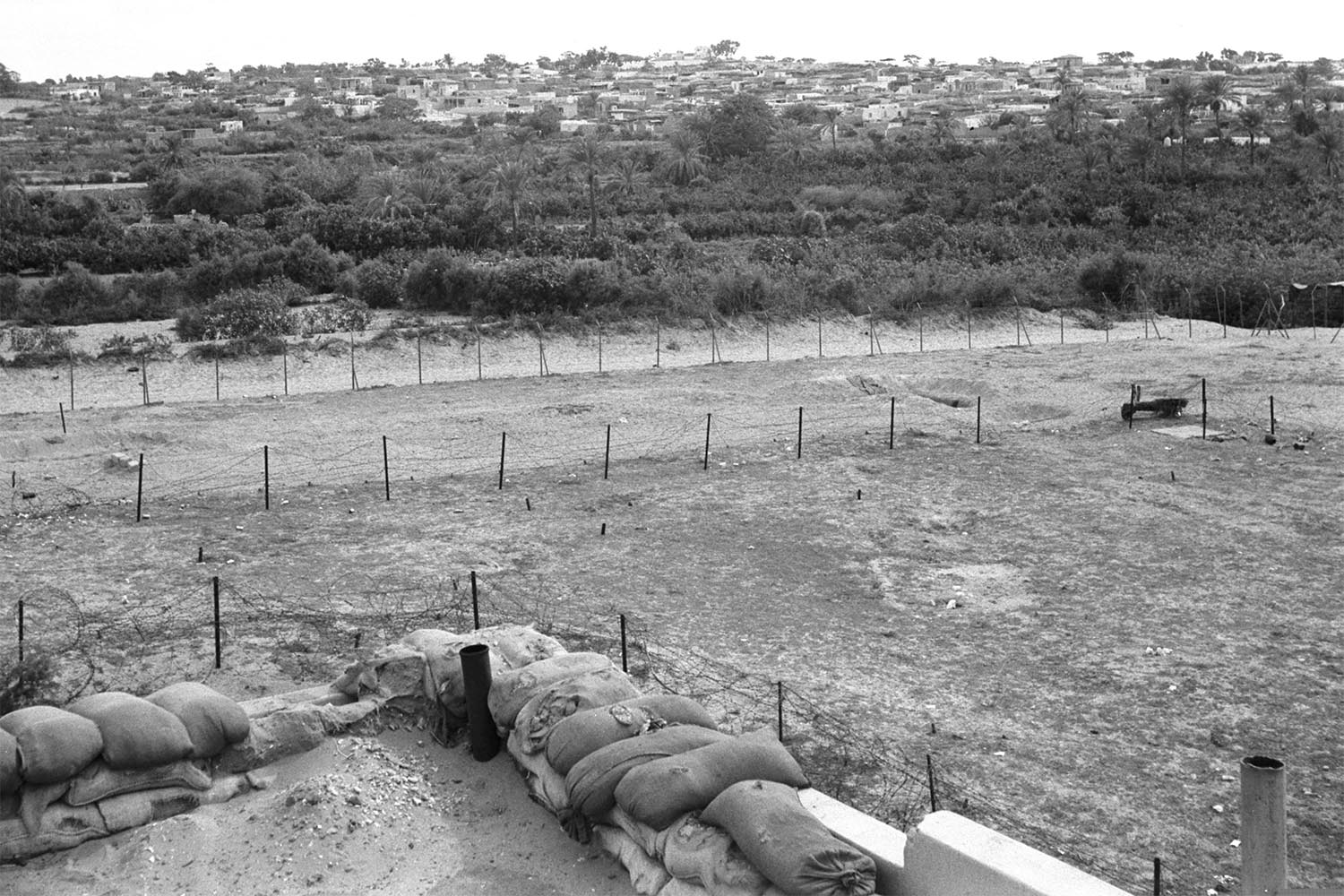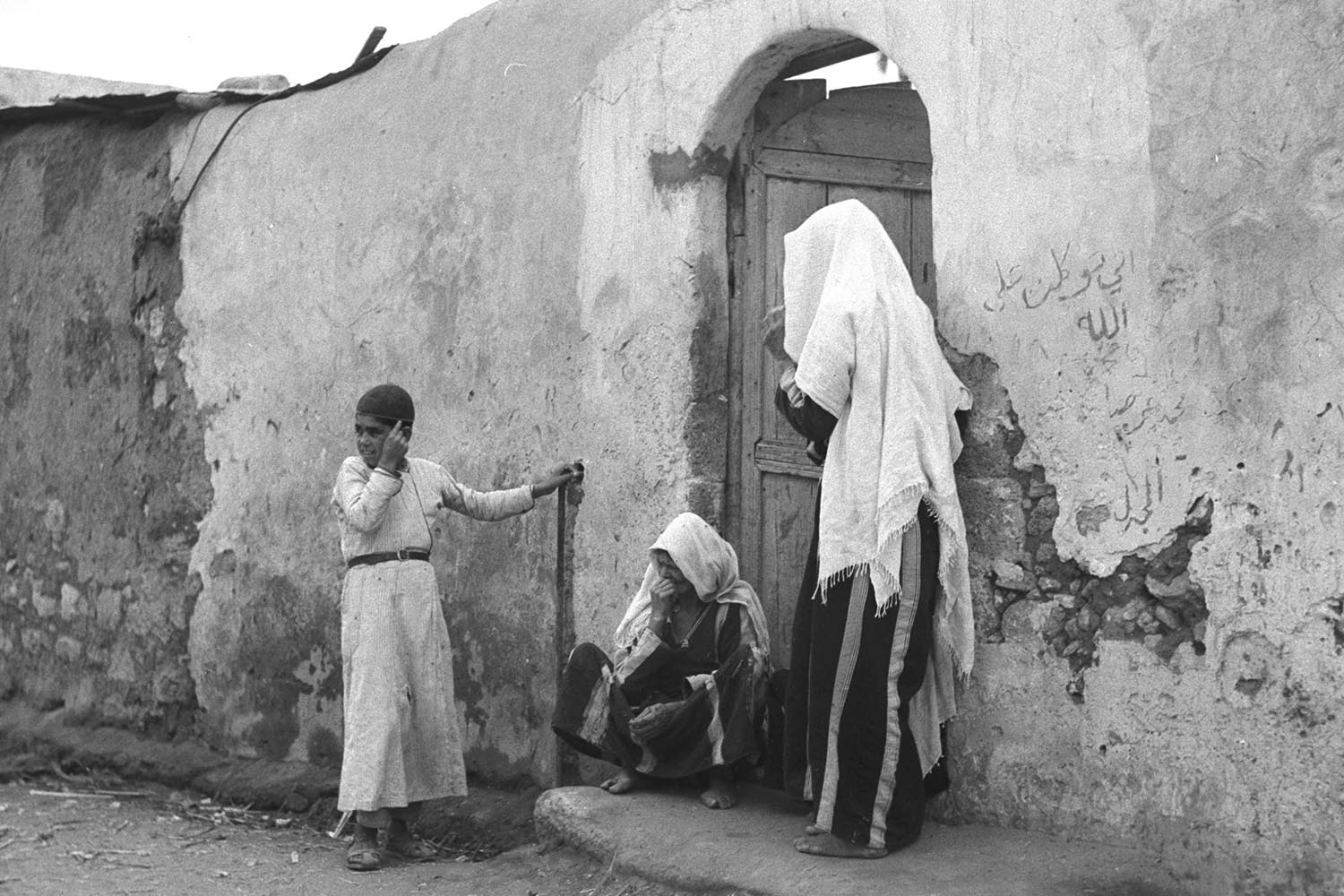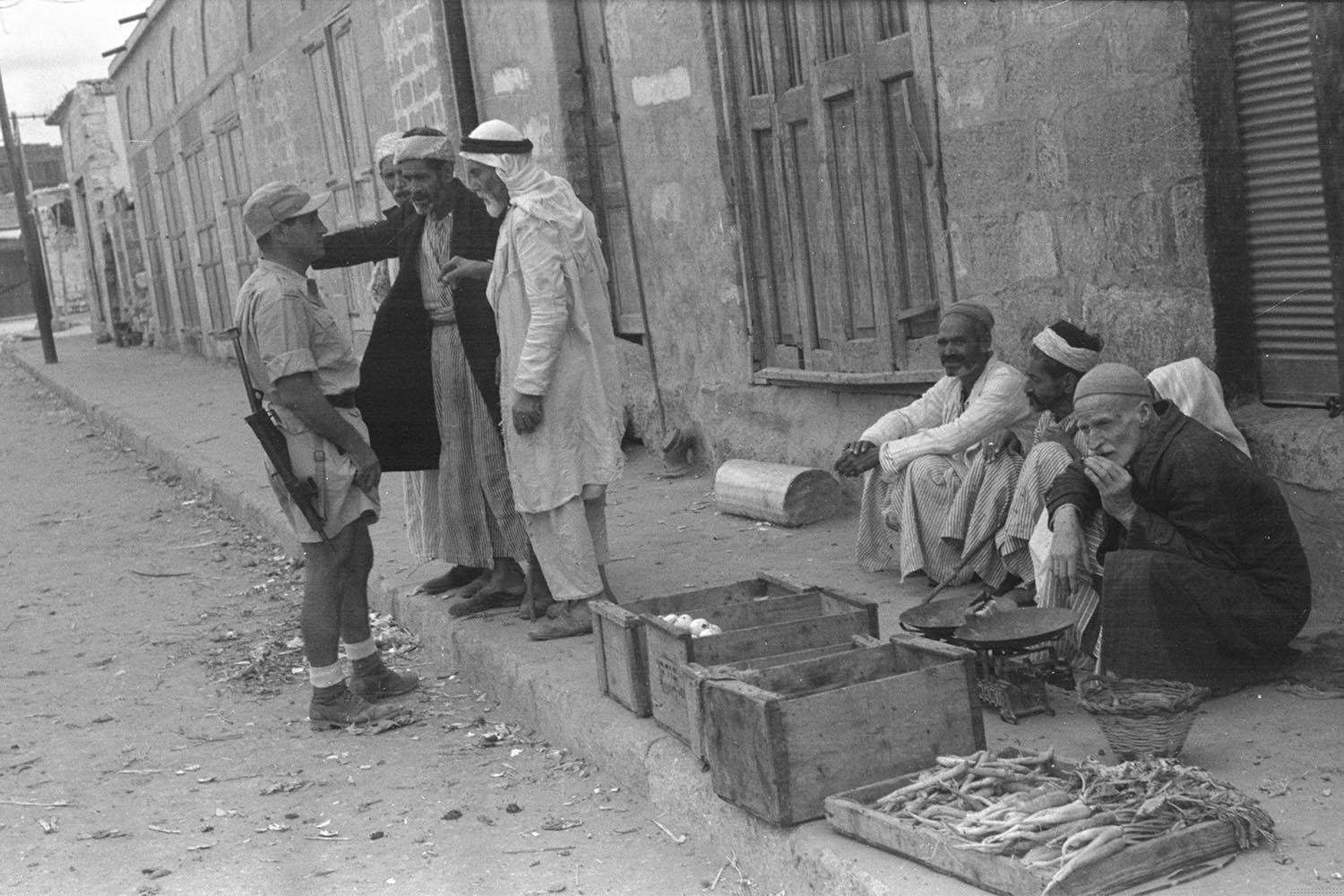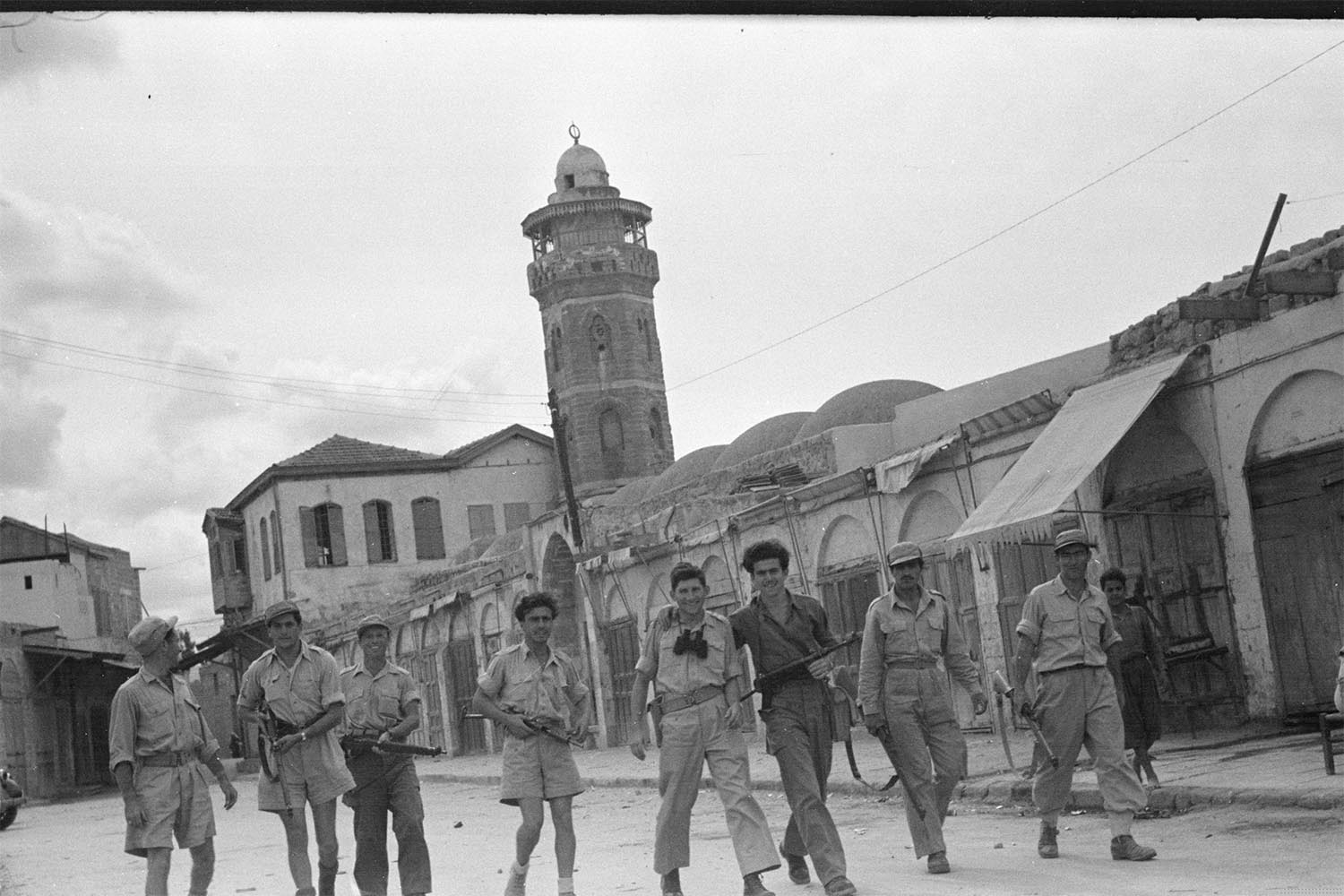November 5, 1948 is the anniversary of the capture of al-Majdal in the War of Independence.
Background
In 1948 Egypt sent around 10,000 troops under the command of Major General Ahmad Ali al-Mwawi to Palestine in April 1948. Mwawi had separated his forces into two parts, one to march towards Jerusalem, the other to advance up the coast to Tel Aviv.
The Battle of Yad Mordechai
 An assembly of the kibbutz members decided on the evacuation of the women and children. On the night of May 18–19, a small Israeli armored column reached the kibbutz and extracted its 92 children. Left behind were 110 members (twenty of them women) and two squads of Palmachniks, equipped with light weapons, a medium machine gun and a PIAT hand-held anti-tank weapon.
An assembly of the kibbutz members decided on the evacuation of the women and children. On the night of May 18–19, a small Israeli armored column reached the kibbutz and extracted its 92 children. Left behind were 110 members (twenty of them women) and two squads of Palmachniks, equipped with light weapons, a medium machine gun and a PIAT hand-held anti-tank weapon.
The Egyptians attacked the settlement several times throughout May 19 and May 20, but failed to capture it. The final Egyptian attack on May 23 saw the armor providing much better support for the infantry, and the Egyptians occupied a part of the settlement. At night, the Israeli defenders, exhausted from the fighting and low on ammunition, withdrew from the settlement. The settlement’s buildings were leveled and the defenders had become “inhabitants of caves and tunnels”.
The Israeli withdrawal was unknown to the Egyptians and the following day, they opened up with a four-hour artillery barrage on the now empty kibbutz. Following the barrage, they occupied the settlement, ending the battle. Yad Mordechai finally fell to the Egyptians on May 24 after hours of bombardment of the vacated kibbutz.
The Israeli delaying action at Yad Mordechai bought the newly established Israeli Defense Forces (IDF) time to organize a defensive line against the northward Egyptian drive toward Tel Aviv. The kibbutz residents, aided by twenty Haganah fighters, imposed a five-day delay on the Egyptians. This gave Israeli forces time to prepare for the Egyptians’ northward advance, and they succeeded in halting the Egyptian advance at Ad Halom less than a week later. Their contribution to the war effort gave a significant advantage to the Haganah and the outcome may have been different had there been no resistance from Yad Mordecai.
Operation Yoav
 Operation Yoav, also called Operation Ten Plagues or Operation Yo’av, was an Israeli military operation carried out from October 15 to 22 in the Negev Desert. Its goal was to drive a wedge between the Egyptian forces along the coast and the Beersheba–Hebron–Jerusalem road, and ultimately to capture the Negev, which was part of the partition plan. Operation Yoav was headed by the Southern Front commander Yigal Allon. The operation was named after Yitzhak Dubno, codenamed “Yoav” by his commanders in the Palmach. Dubno, a senior Palmach officer, was charged with planning and leading the defense of the kibbutzim Negba and Yad Mordechai. Dubno was killed in an air raid on Kibbutz Negba shortly after Egyptian forces began their offensive on Israel’s southern front.
Operation Yoav, also called Operation Ten Plagues or Operation Yo’av, was an Israeli military operation carried out from October 15 to 22 in the Negev Desert. Its goal was to drive a wedge between the Egyptian forces along the coast and the Beersheba–Hebron–Jerusalem road, and ultimately to capture the Negev, which was part of the partition plan. Operation Yoav was headed by the Southern Front commander Yigal Allon. The operation was named after Yitzhak Dubno, codenamed “Yoav” by his commanders in the Palmach. Dubno, a senior Palmach officer, was charged with planning and leading the defense of the kibbutzim Negba and Yad Mordechai. Dubno was killed in an air raid on Kibbutz Negba shortly after Egyptian forces began their offensive on Israel’s southern front.
Operation Ha-Har
On October 19, Operation Ha-Har commenced in the Jerusalem Corridor, while a naval battle also took place near al-Majdal, with three Israeli corvettes facing an Egyptian corvette with air support. An Israeli sailor was killed and four wounded, and two of the ships were damaged. One Egyptian plane was shot down, but the corvette escaped. Israeli naval vessels also shelled al-Majdal on October 17, and Gaza on October 21, with air support from the Israeli Air Force. The same day, the IDF captured Beersheba, and took 120 Egyptian soldiers prisoner. On October 22, Israeli naval commandos using explosive boats sank the Egyptian flagship Emir Farouk, and damaged an Egyptian minesweeper.
Capture of al-Majdal
The Egyptians left al-Majdal as early as November 1, 1948.
On November 4, 1948, Operation Contact was started with the purpose of checking the area of al-Majdal. Soldiers from the Givati Brigade were sent to verify that the Egyptians had indeed left and then they held al-Majdal until November 5, 1948, when Israeli forces arrived to replace them.
On November 6, 1948, it was announced that the entire area from al-Majdal to Beit Hanoun was evacuated of Egyptian forces and that al-Majdal was controlled by the military administration and its units.
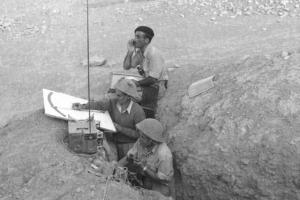
War of Independence. General view of Majdal.
Al-Majdal’s name was changed to Migdal Gaza, Migdal Gad and Migdal Ashkelon, and the neighborhood of Afridar, which was built in the early 195os, was eventually joined with Ashkelon.
Below are some photos taken in al-Majdal during the War of Independence in 1948. The photos courtesy of the Government Press Office.
